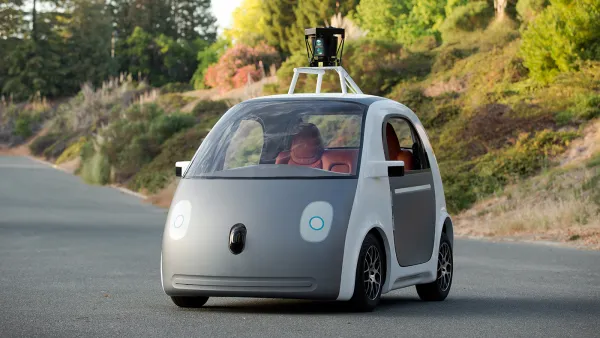After decades of discussion and experimentation, Personal Rapid Transit (PRT) is again getting attention as a potential alternative means of transport, merging the comfort of the private car with the automation and safety of public transit.
"Personal Rapid Transit is probably best described as a hybrid between the private car and public transit, with some more familiar elements of the taxi and elevator thrown in," explains Badger. "Picture, in short, a pod car."
The concept of the PRT has been around for at least five decades, and a system from the 1970's still operates at the University of West Virginia. Now, with improved technology, lower costs, and attractive environmental benefits, the technology is once again attracting interest. In fact, "Heathrow Airport in the U.K. opened a PRT system in the summer of 2011, and the built-from-scratch supposedly net-zero community of Masdar City in the United Arab Emirates is planned around one as well."
With recent research suggesting the crucial element in persuading people to ditch their cars for mass transit is to match the qualities people love most about their automobiles, PRT might "be the solution that destigmatizes public transit for drivers who fear its unreliability," says Badger.
"On a PRT system, you’d hop into your own pod, with one arriving every minute or even less at a station on a designated track. You could share one as you would a taxi, with someone heading to the same destination. Or, you’d ride it alone like a car. You’d then direct the vehicle to a specific destination within the system, to which it would travel without making any stops in between (and without fighting normal congestion). It would be almost like stepping into an elevator and pressing a button to the sixth floor."
"Everything about this scheme mirrors the personalized experience of a private car, on common public infrastructure like a set of train tracks," adds Badger.
"That was the original idea," says Wayne Cottrell, an associate faculty associate professor of engineering at National University in San Diego. "Advocates have stuck to that over the decades: This is a great idea, we just need to convince somebody with money to invest in this."
FULL STORY: Would More Drivers Use Mass Transit if It Mimicked Private Cars?

Analysis: Cybertruck Fatality Rate Far Exceeds That of Ford Pinto
The Tesla Cybertruck was recalled seven times last year.

National Parks Layoffs Will Cause Communities to Lose Billions
Thousands of essential park workers were laid off this week, just before the busy spring break season.

Retro-silient?: America’s First “Eco-burb,” The Woodlands Turns 50
A master-planned community north of Houston offers lessons on green infrastructure and resilient design, but falls short of its founder’s lofty affordability and walkability goals.

Test News Post 1
This is a summary

Analysis: Cybertruck Fatality Rate Far Exceeds That of Ford Pinto
The Tesla Cybertruck was recalled seven times last year.

Test News Headline 46
Test for the image on the front page.
Urban Design for Planners 1: Software Tools
This six-course series explores essential urban design concepts using open source software and equips planners with the tools they need to participate fully in the urban design process.
Planning for Universal Design
Learn the tools for implementing Universal Design in planning regulations.
EMC Planning Group, Inc.
Planetizen
Planetizen
Mpact (formerly Rail~Volution)
Great Falls Development Authority, Inc.
HUDs Office of Policy Development and Research
NYU Wagner Graduate School of Public Service


























